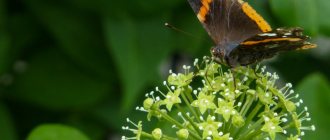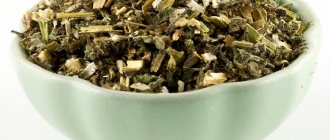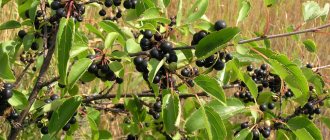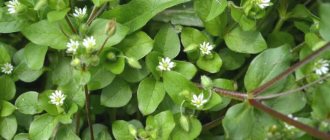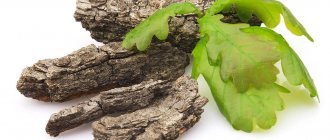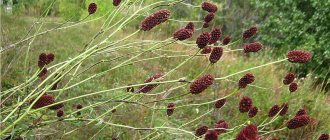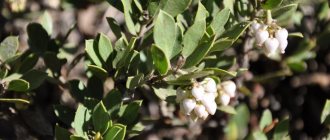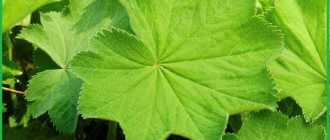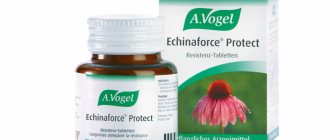Horse chestnut is a luxurious tree that adorns the streets of cities and villages. With its spectacular inflorescences, it symbolizes the approach of summer, and its fruits serve as material for original crafts. But not everyone knows that this plant also has healing properties. Thus, tinctures from chestnut fruits treat many diseases and contribute to overall improvement of health. We will tell you further about how to prepare and take them.
Buy chestnut (fruit) on our website
Botanical description and range of horse chestnut
A tall deciduous tree or shrub plant, the height of which in meters reaches 20-25 m. Even the wild species looks very attractive and has large, complex, palmate opposite leaves on elongated petioles, without stipules. The foliage forms a fairly dense and spectacular crown. The buds and buds are often whitish or pink in color.
The shape of the flowers is bell-shaped. The flowers are collected in large, pyramidal in shape, very erect racemes. The plant blooms massively between May and June. Several forms are grown, some of which have a double flower . After flowering, fruits are formed, represented by a tricuspid spiny capsule with an opening sash part.
Under natural conditions, the plant is found in southern Europe, northern India and East Asia, as well as in North America. In our country, horse chestnut plantings grow very well, and about thirteen species have been cultivated. Any variety is a very good honey plant, highly decorative throughout the growing season.
Diseases and various conditions
Celiac disease
Chestnuts do not contain gluten, a protein that can damage the small intestine and cause undesirable consequences. For this reason, various gluten-free products contain chestnuts.
High cholesterol levels
Chestnuts have approximately twenty-one percent dietary cellulose, which is required to lower blood cholesterol levels. They are also rich in monounsaturated fatty acids, such as oleic and palmitoleic acids, which can increase “good” cholesterol and lower “bad” cholesterol.
Diarrhea
Chestnuts, and in particular their bark, are an effective remedy against diarrhea. The water in which chestnuts are boiled with their shells is rich in tannins, and these substances in controlled quantities can help prevent diarrhea. Boil 3 tablespoons of crushed bark (or an equivalent amount of whole chestnuts with shells) in one liter of water for 20 minutes and drink 3-4 glasses per day.
Attention! Chestnuts should not be given to children, as the wrong dose can lead to an overdose of tannins.
Hyperthyroidism
The thyroid gland is the largest endocrine gland in our body. It produces two important hormones called triiodothyronine and thyroxine. The thyroid gland coordinates the rate at which the body uses energy, produces proteins, and controls the body's responsiveness to other hormones. And the ellagic acid in chestnuts is useful in cases of hyperthyroidism (hyperthyroidism) because it suppresses hormonal secretion.
Respiratory diseases
Coughs, colds, bronchitis and sore throats are some of the most common respiratory problems associated with discomfort and pain. Chestnuts have an expectorant effect, making them a suitable remedy in these conditions.
Overweight
You should lose weight the right way. An unhealthy diet can cause great harm to the body in the long run. A healthy diet is the most important part of a weight loss program, and including chestnuts in it is the best solution as they are low in fat but high in energy.
The abundance of fiber contributes to a longer feeling of fullness and decreased appetite. The mineral composition and water in chestnuts further controls and supplies the necessary electrolytes.
During pregnancy
Pregnancy is an important moment for any woman. During this period, she is responsible not only for the growth of the child inside her, but also for providing herself and him with all the necessary nutrients, vitamins and minerals.
As the fetus grows, the needs of both mother and child increase. Chestnuts contain calcium, vitamins and important minerals. All these substances strengthen bones and prevent muscle spasms, which often occur in pregnant women.
Electrolyte imbalance
Electrolytes are substances that break down into ions in an aqueous solution; they are of great importance and function in the body. The main electrolytes are sodium, magnesium, potassium and carbonates. Another important function of electrolytes is to transport nerve impulses from the brain to various parts of the body and back.
Loss of electrolytes occurs physiologically through excretion and sweating, and it is the diet that must replenish the required amounts of electrolytes. Chestnuts contain safe and reasonable amounts of potassium and magnesium, which are essential for electrolyte balance.
Anemia
Iron and copper are two important elements needed for blood. Blood is the main conductor of oxygen to various parts of the body. All this is achieved with the help of an iron-containing component known as hemoglobin.
Another component that transports oxygen to various parts of the body is called hemocyanin. It consists of copper, and this substance binds an oxygen molecule between two atoms. Although hemocyanin is not as effective as hemoglobin, it is also important for this function.
Chestnuts contain sufficient amounts of iron and copper. Therefore, they are recommended for people with anemia.
origin of name
Horse or horse chestnut has been known since ancient times. Currently, a large number of explanations for the name of this plant are known. Most often it is referred to as the petioles of fallen leaves. A falling leaf leaves a scar on the branches that resembles a horse's shoe in appearance. In the second case, it is generally accepted that after over-ripening they acquire the very characteristic color of a bay horse. According to a third opinion, the name is associated with dark brown fruits with a light spot reminiscent of a horse's hoof mark.
Many domestic experts also believe that the name was given to the plant solely in order to be able to distinguish inedible fruits from the harvest of edible plants.
Chestnut pruning
Horse chestnut is characterized by slow growth in the first time after planting - for about 10 years. Further growth becomes more active, so there is a need to form a crown, which is done by pruning.
The tree should be pruned for the first time before it actively grows, in order to immediately give it the required shape. Then you will need to cut off the dry branches every spring.
After planting, during the first year, all shoots must be cut in half. In the second year, in spring, remove short branches located on the sides.
After trimming, it is recommended to treat the sections with oil paint 3-4 days after the procedure, when these areas have dried at least a little
Medicinal properties of chestnut (video)
Photo gallery
Fruits (seeds) of horse chestnut
The fruits are a real storehouse of useful components and microelements. They contain a small amount of fat and a large amount of carbohydrates and proteins. The fruits also contain about 60% starch, fiber, approximately 15% sugar, B vitamins and minerals such as iron, sodium, potassium, copper and phosphorus.
Horse chestnut leaves
Like any medicinal herb, the foliage has a number of medicinal properties , which allows the use of drugs based on it in the treatment of various vascular diseases, including varicose veins, thrombophlebitis, increased capillary fragility and various inflammatory processes of the veins.
Plant bark
Decoctions based on the bark are widely used in cases of chronic colitis and enterocolitis, as well as difficult-to-treat diarrhea and gastritis with increased acidity of gastric juice. also allows you to get rid of diseases of the spleen , treats bronchitis and various bleedings.
Chestnut flowers
Flowers are used to prepare decoctions, infusions or alcohol tinctures, which are excellent for treating heart disease, liver problems, pulmonary tuberculosis, shortness of breath, anemia and rheumatism. Alcohol tincture is excellent for treating arthrosis and relieving gout pain.
Chemical composition
The seeds of the plant contain:
- saponins, about 10% (escin, artrescine, fraxin). They reduce blood viscosity, increase the tone of veins, eliminate the phenomena of venous stagnation and strengthen the walls of blood vessels. Activate the production of adrenal hormones, eliminate swelling;
- glycoside (esculin). Reduces the permeability of capillary walls, increases the antithrombic properties of blood serum, as well as the production of antithrombin, accelerates blood flow to the veins, and promotes vasodilation. Stabilizes the central nervous system, has a mild diuretic effect, thins and removes mucus;
- coumarins. Stop the growth of tumor cells, accelerate wound healing, help reduce blood clotting and reduce the risk of blood clots;
- pectins. Remove metal salts and radionuclides, destroy pathogenic intestinal flora, eliminate constipation, prevent the formation of atherosclerotic plaques, accelerate tissue regeneration;
- organic acids. They inhibit the processes of decay and fermentation in the intestines, remove toxins and toxic substances, and improve the condition of blood vessels;
- fatty oil (up to 6%). Participates in tissue regeneration, eliminates inflammation, regulates metabolism;
- flavonoids (rutin and others). Reduce the permeability and fragility of capillaries, reduce arterial and intraocular pressure, slow down the heart rate, and increase bile formation;
- starch up to 49.5%. Converts to glucose and is a source of energy;
- mucus. Eliminate inflammation, accelerate wound healing and improve mucus removal;
- lecithin. Activates oxidative processes, participates in fat metabolism, the formation of hemoglobin and red blood cells, improves the functioning of the central nervous system and heart, increases resistance to toxins;
- vitamins C, A, groups B and K. They have a complex positive effect (strengthen the immune system, eliminate inflammation, participate in metabolic reactions, etc.;
- tannins. Protein cells are denatured, thereby creating a protective film with bactericidal and astringent properties.
Tannins, saponin escin and glycoside esculin were found in tree bark. The leaves contain flavonoids (isoquercitrin, quercetin), as well as tannins, rutin, spireoside, astragalin, carotenoids, micro- and macroelements (selenium, boron, calcium, silver, chromium, barium, iodine, iron, zinc, nickel).
Industrial applications of horse chestnut
Durable and high-quality horse chestnut wood is very similar in its basic characteristics to linden wood. The wood of this plant is not currently widely used commercially, but is often used in the manufacture of door panels or various furniture elements.
Among other things, the culture is used on an industrial scale in modern cosmetology, which is explained by the presence of a large amount of tannins in the composition. In the cosmetics industry, plant raw materials are used to prepare products that have tonic properties, increase microcirculation, and strengthen vascular walls. Such drugs allow you to fight cellulite and natural aging of the skin.
The healing effects of chestnut
Medicinal properties of horse chestnut:
- Eliminates tissue swelling.
- Suppresses the inflammatory process.
- Reduces blood clotting.
- Reduces blood viscosity, prevents the formation of blood clots.
- Strengthens vascular walls, making them less permeable.
- Normalizes stomach acidity levels.
- Relieves tissue spasms.
- Normalizes the functioning of the gallbladder.
- Reduces pain.
- Stabilizes the functioning of the liver and heart.
- Increases vein tone.
- Improves blood circulation in the body.
- Lowers blood pressure.
- Dilates blood vessels.
- Normalizes blood cholesterol levels.
- Restores the digestive process.
Chestnut removes harmful substances from the body.
Such a huge range of beneficial properties of chestnut allows the plant to be actively used for medicinal purposes.
Preparations in the pharmacy based on chestnut
Pharmacy products can be in the form of an extract, tincture or cream, and preparations are also available in tablets and Escusan drops, which help reduce capillary permeability and increase venous tone.
Such drugs have very high, proven effectiveness in combating the formation of blood clots and reduce inflammatory processes. The manufacturer's instructions recommend using the drops three times a day, fifteen or twenty drops. A very popular tablet form is produced under the name “Esflazide” and is an effective analogue of “Eskuzan ” drops.
Distribution and ecology
The common horse chestnut grows in a small area in the mountains of the Balkans (in northern Greece, Albania, the Republic of Macedonia, Serbia and Bulgaria)[7] in deciduous forests along with alder, ash, maple, hornbeam, linden, beech and other tree species, rising into the mountains to an altitude of 1,000–1,200 m above sea level.
Long-lived (under favorable conditions reaches an age of 200-300 years). Almost not damaged by insects. Tolerates transplantation well in adulthood.
Shade-tolerant, grows well in deep, loose soils - clay or sandy loam, sufficiently moist, but without excessive moisture. Tolerates fairly dry chernozem soils in the steppe zone, but does not tolerate saline soils well. Sensitive to dry winds, which is why the leaves often burn badly in summer and fall off prematurely.
Winter-hardy in cultivation in the central zone of the European part of Russia (up to Moscow). At the latitude of Moscow, in very severe winters it freezes; Young trees also freeze in St. Petersburg, but in protected places they grow into large, abundantly flowering trees.
| From left to right: bud, leaf, flower, leaf scars on shoots, inflorescence |
Diseases
Among horse chestnut diseases, fungal diseases are the most common.
It is not uncommon to see chestnut trees suffering from leaf rust disease (leaf spotting). There are several types of this fungal disease, in particular three main ones:
- Red-brown spotting - appears as burgundy spots on the leaves;
- Brown spotting - the leaves begin to dry at the edges, then completely, acquiring a reddish color;
- Black spotting usually appears on diseased or dry leaves in the form of black or dark gray spots.
Horse chestnut leaf affected by brown and black spot, as well as powdery mildewHorse chestnut seedling in the 1st year of life, affected by powdery mildew
As a result of this disease, the leaves deteriorate both externally and productively (little chlorophyll is produced during photosynthesis) and fall off ahead of time - most often in August, but possibly even in July. The disease manifests itself as a result of unfavorable conditions, in particular due to unsuitable soil for them (most often due to increased acidity of the soil), as a result of which the tree weakens and is more susceptible to this disease. Because of this disease, the growth and development of the tree slows down, and even its death is possible [8] [9].
Also, young chestnuts often suffer from powdery mildew. Powdery mildew is a fungal disease in which the leaves become covered with a white coating and after a while, like with rust on the leaves, they turn black and fall off prematurely.
| From left to right: chestnut seedling in the middle May ; the same chestnut two months later - red stains are visible on the leaves due to its infection with a fungus due to the general weakening of the tree after poisoning from watering defoliant (2 sheets in the 2nd photo are broken off); final stage of fungal action (mid-August): leaves turn brown and fall off | ||||||||||
Many horse chestnuts suffer from damage to the trunk by the fungus tinder fungus, which destroys the wood of the tree, causing rot of different types of wood, disrupting the metabolism in it and weakening it. Gradually, the tinder fungus spreads further, affecting more and more areas of wood, and as a result, a heavily affected and weakened tree most often dies.
Traditional medicine recipes with horse chestnut
It is not difficult to make your own products based on plant raw materials - it is enough to strictly follow the established proportions, and also use a high-quality, correctly assembled and prepared base.
Tinctures
For different etiologies of venous problems, you need to pour about 50 g of flowers into a clean glass container, then pour in half a liter of vodka. The tincture is infused for a couple of weeks, but the liquid needs to be shaken periodically. After two weeks, the resulting tincture is carefully filtered. This medicine must be taken daily , thirty drops before meals. The standard course of treatment is four weeks, after which it is necessary to take a mandatory break.
Decoctions and infusions
These types of medicines are most in demand for external use. Foliage, flowers, and crushed fruits are suitable for preparation. Half of an ordinary enamel bucket is filled with plant mass, after which boiling water is poured into the container. Under the lid, such a healing solution should be infused for about twelve hours, after which it is filtered. Infusion and decoction are perfect not only for lotions and irrigations, but are also widely used as a highly effective herbal bath.
Ointment
To prepare your own healing ointment, you need to chop five chestnuts or five tablespoons of flowers, then pour half a liter of any vegetable oil over them and boil in a water bath for about an hour. The resulting composition is cooled at room temperature and filtered. This product lubricates the face and sore spots. Chestnut-based ointment is an excellent remedy for rejuvenating and whitening the skin.
Oil
At home, healing oils based on plant components are often made using cream, low-fat bio-yogurt or olive oil. All components of the medicinal oil are mixed in arbitrary proportions. The resulting mixture can be stored for several weeks in a regular household refrigerator.
Collection and preparation
All parts of trees, including horse chestnut flowers, are used for medicinal purposes. Below are recommendations on when it is best to collect raw materials for the manufacture of medicines:
- Bark. Harvesting is done in March. The bark is carefully cut from young branches. It is then crushed and dried. Decoctions and infusions are prepared from the bark, which relieve pain and inflammation. Medicines made from it are effective in the treatment of gout, hemorrhoids, rheumatism and respiratory diseases.
- Horse chestnut flowers are collected during active flowering (in May). Afterwards they are laid out in the sun for 1 day so that they wilt a little. Then put it in a well-ventilated room, or dry it in the fresh air in the shade. Flowers are usually infused with alcohol and taken to restore the vascular system and as a pain reliever for joints.
- Leaves are collected in spring or early summer. They should be juicy and deep green. During the harvesting process they are washed and dried. Alcohol tinctures and decoctions are prepared from the leaves. Such medications are used for inflammation and suppuration.
- Horse chestnut fruits fall in October, at which time they begin to be harvested. When making medicines, whole and crushed fruits are used. Healing tinctures and decoctions are prepared on their basis. Chestnut fruits have found application in restoring the functions of the digestive system, relieving joint pain, and normalizing the functioning of the heart and blood vessels.
Important!
It is better to collect medicinal raw materials in places far from the city and highways. This is where the most useful trees grow.
Consumption of horse chestnut during pregnancy and for the treatment of children
It should be remembered that at the moment there is no scientific evidence of the negative effects of the active components of horse chestnut on the body of a pregnant woman and the fetus. However, experts recommend avoiding the use of such folk remedies and pharmacological drugs in the first trimester of pregnancy, as well as when treating preschool children.
Contraindications to the use of tincture
Despite its medicinal properties, chestnut fruit tincture also has contraindications:
- individual intolerance;
- hypotension (low blood pressure);
- menstrual irregularities;
- constipation;
- renal failure;
- pregnancy and lactation.
You can always buy chestnut fruits in the FitoContinent online store. Place your order by phone or directly on the website.
Contraindications and harm of chestnut
One of the main properties of the medicinal plant is the ability to quickly and very effectively thin the blood, as well as increase weight due to the high content of starch and sugars, therefore the main contraindications are:
- tendency to corpulence;
- thrombocytopenia;
- any blood clotting disorders;
- dysfunctions of the gastric and intestinal tract;
- hidden bleeding;
- diabetes.
Chestnut ointment
To prepare the ointment, the fruits must be ground in a coffee grinder along with the brown peel to a powder. And any oily base is needed.
Take 0.5 kg, for example, cocoa butter or pork fat and 100 g. prepared fruit powder, mix, cook in a water bath for 30 minutes. Repeat the procedure a day later. You can add, if available, 20 g. propolis.
Strain the hot mixture through several layers of gauze. After hardening, place the ointment in the refrigerator. Use in the treatment of hemorrhoids, varicose veins, and any inflammation of the skin.
In dietetics
Edible chestnut, the benefits and harms of which have been known to mankind for a long time, has found its application in dietetics. Its fruits contain a lot of starch and quickly replenish the body's energy reserves. During a diet, they are perfect for a quick and healthy snack.
There is even a special diet based on chestnuts, following which you can lose 5 kg in 1-1.5 weeks. According to it, you should consume 250 grams for breakfast and dinner. baked fruits. For lunch - boiled chicken and vegetables.
Those who follow a diet should not eat salt, sugar and other seasonings. It is recommended to drink at least 2 liters of water per day. If necessary, the diet can be repeated after 1.5-2 months.
Selection rules
Edible chestnut ripens in August-November. At this time, you can find freshly harvested nuts in markets and stores. To buy a product of proper quality, you should pay attention to:
- Form. Good nuts are large and have the same appearance.
- Weight. High-quality fruits are always hard and heavy, without any dents.
- Color. Good nuts are glossy in appearance, evenly colored in a rich brown color.
When buying a product on the market, it is important to make sure that the nuts are edible. Horse chestnut is poisonous and causes severe intoxication when consumed.
When choosing a product in a store, you need to pay attention to the release date and expiration date of chestnuts indicated on the label.
